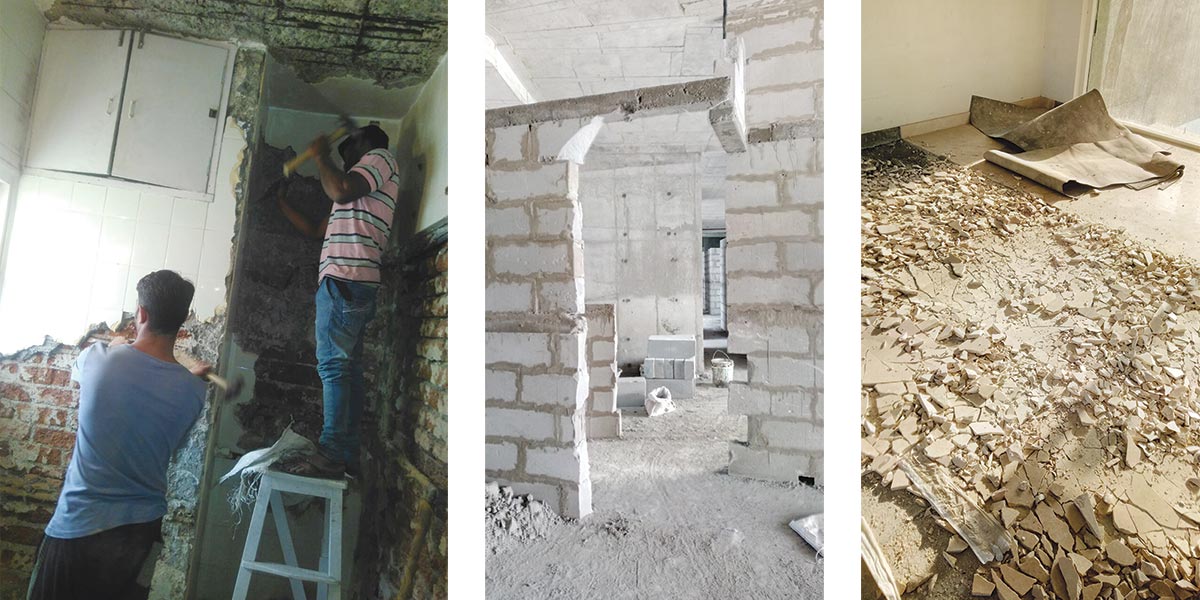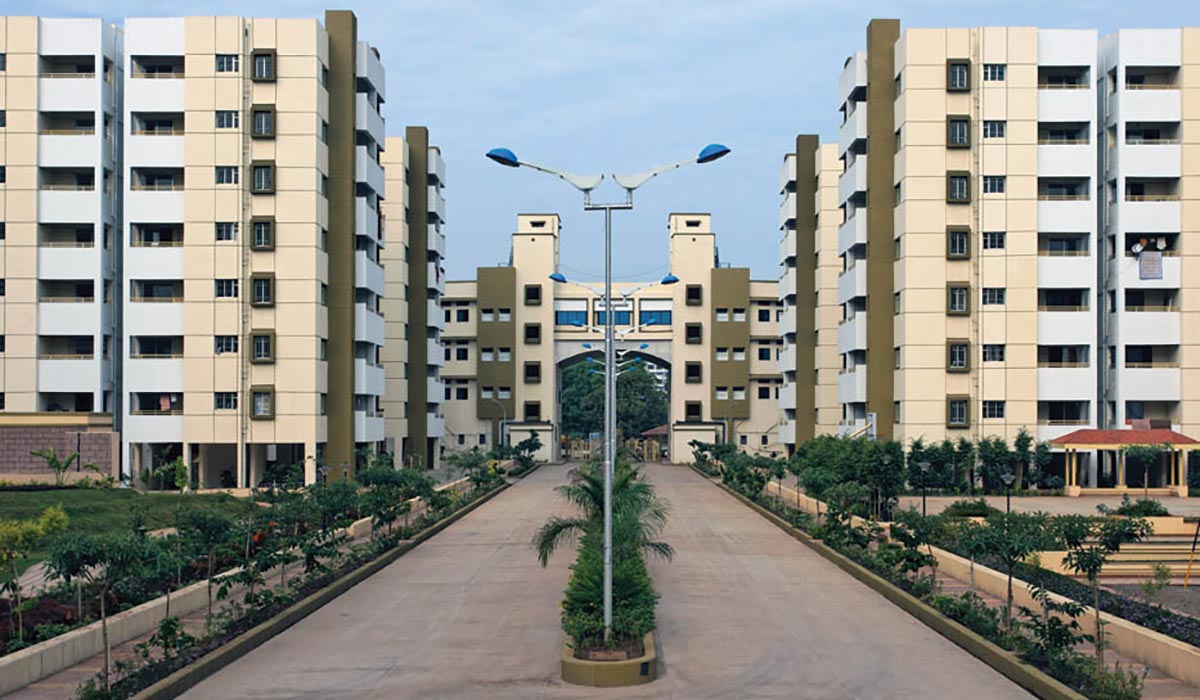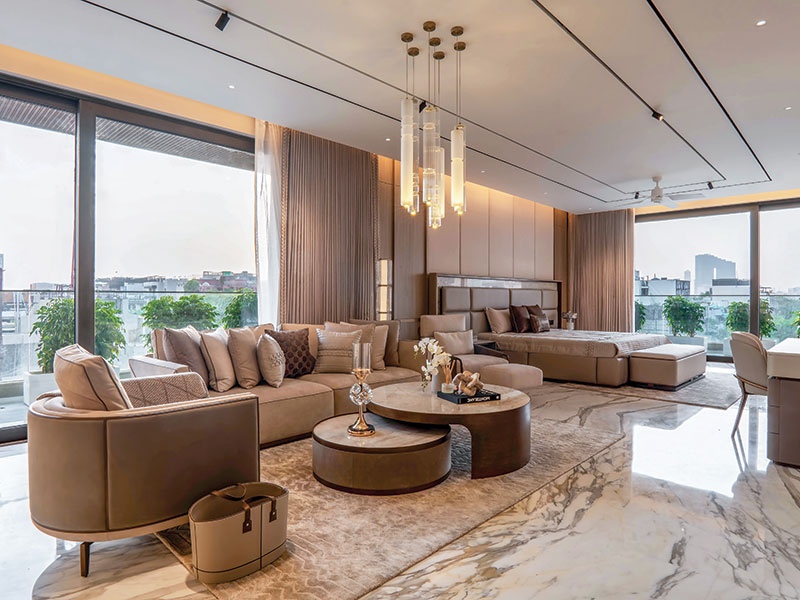Premium residential premises are style statements of many builders. They sell these residences as bare shells without any internal finishing, or as warm shells with all internal finishing complete, or as fully furnished and ready to move in. The focus of this article is the (nearly) 50% of home buyers in the premium category who would have bought warm shell flats, ready with internal finishes, electrical fittings, plumbing and sanitary work, kitchen, etc, but are not satisfied with their quality/brand, and end up breaking everything and redoing the flat.
Architects, engineers and real estate developers should be actively involved in the planning and execution of sustainable development. We have the skills and resources to provide practical solutions that induce minimum environmental degradation.
Ar. Harish Gupta
Think about the number of premium projects coming up in the country and the refurbishments that follow, despite the newness of the fit-outs, just because the developer did not or could not offer the buyer a choice of brands/materials at the time of purchase.
Every standard 2 BHK apartment that undergoes such renovation generates 15 to 20 cubic meter of debris which comprise of marble, granite, ceramic tiles, sand mortar, bricks, blocks, sanitaryware, plumbing lines, electrical fixtures, wires and conduits, gypsum, wooden doors, etc. In premium homes, the debris is upward of 40 cubic meter depending on the size and extent of breakage. Consider that 100 such apartments are refurbished in every premium tower before being used even for a single day, and you will have a small mountain of wasted and unusable building materials amounting to an average of 5000 cubic meter as landfill per project.
Is it so difficult for developers to overlook such a huge loophole in their ‘green building’ approach? Has the Green Building Council not factored in that a project must be rated on the total material and energy consumed till the first end-user occupies it, before rating such projects as green? We need to take a re look at the rating system and work towards a solution that offers minimum environmental impact.
A possible solution is that the developer must offer custom finishes at the time of purchase, and within a practical range of options. For instance, there could be 15-20 material and brand choices for the flooring. Every toilet could have 3-4 planning options and 8-10 finishes to choose from. Likewise, for the doors, kitchen, and other amenity spaces. Electrical and sanitary fixtures too can be custom selected.
The developer could allow vendors of big brands to put up temporary displays of their products within the project site such that customers can visit and make their selection. Interior designers, architects and contractors could be empaneled by the developer to execute the designs as per clients’ choice.

In such a scenario, the developer would have outsourced 50% of his building’s fit-outs, and saved on the cost of his own supervisory staff. This would also leave the developer free to move on to his next project even if some apartments are yet to be sold, or till construction is fully complete. The management of the building and the sales team can carry forward the work, and the developer would only have to look for the revenue coming in.
The outcome is a happy one for the home buyer who did not have to incur the extra cost of redoing up his flat, and the developer earns a higher profit and faster sales as he is giving customised solutions and cost savings to the client. And, most importantly, the environment would be less depleted of its natural resources.
Some solutions to avoid post construction wastage:
- Setting up display rooms at site showcasing selected finishes, materials etc by vendors can lead to higher profits for developer and better customer satisfaction.
- Having sold the flats with best of finishes, a lock-in period of minimum 10 years be implemented through builder-buyer agreement or the housing society act that prevents breaking and changing internal finishes and layouts.
- Selling premises as bare shell needs a rethink perhaps as fit-outs are uncontrolled or beyond any time barrier for completion, making refurbishments a nuisance for other inhabitants. A suggested 2-year limit to complete internal finishes, which could also keep a check on empty shells pile-up as such dead stocks are not good for the environment.
- Only screened contractors and interior designers to work in a housing society, who will follow the norms laid down by RERA or the Green Building Council, and which must be incorporated in the bylaws of housing societies.

Developers are already providing the best warm shell solution in the market, so I personally see no reason for clients to change it. Internationally, it is common to accept all hard finishes and the developer also goes to the extent of building the kitchen and providing all the required amenities This trend in India of people wanting to redo their newly acquired apartments is an unhealthy practice. Consumers can differentiate/upgrade their apartments through interior décor, wall paper, furniture, artifacts, colour schemes, etc.
Developers have to follow very stringent environmental norms to get their buildings rated by the Green Counci. They follow RERA warrantee conditions, have the best interior finishes, hire the best architects and professionals for execution by reputed contractors, and utilize the highest quality standards using various process checks.
However, when a consumer does the interior finishing of his apartment, he seeks no permissions, nor does he give any plans for disposal of the waste created - a job that definitely requires a lot more supervision. Most contractors are unable to bear the cost of proper disposal of broken building materials, which end up on the sides of roads or in dump yards. I would also suggest that consumers should employ only the best contractors for doing up the interiors, even if the cost is a little higher.

After completing the bare shell works, our in-house contractors can readily provide 4 to 5 different types of warm finished sample flat. Through such prototypes, customers can choose the finish of their liking. The other benefit is that the cast and shell works can be completed at a fast pace while the interior works change from flat to flat within defined parameters. Developer can come out faster from the project having made his profits. Since major works will be completed, his manpower usage can be decreased. He can also make a reasonable profit by employing his own interior division for completion of works as per customer’s choice.
However, finishing the interior works as per the options given, will be a Herculean task to manage in the same tower. But as every problem is created to find a better solution, we can decrease our load by opening a sister concern for interior works. This even makes our profits in a project stand intact even though the revenue generated may be distributed. Commitment to saving the environment has a huge positive impact on the developer’s brand image.


The home buyer is only concerned with his material choices and budget. He does not (unfortunately) have the onus of protecting the environment, nor is he affected by the breakage, wastage and noise as he generally does not stay in the premises during renovation. Also, the cost of breaking and debris disposal is negligible as far as the total budget is concerned. However, the modern, educated buyer, if given elegant choices in the interior finishes at the time of building construction, would definitely be interested. Many builders, in fact, are providing detailed views of finished interiors of apartments to buyers along with sample flats.
Debris disposal is a cumbersome, environmentally hazardous and expensive process. As architects, we face opposition from the building societies who want to ban our use of breaker machines. So, breaking has to be done manually by the chisel-hammer method, which is a waste of time and labour. The debris is then filled in gunny bags to be disposed in trucks - yet another expense. If this construction waste can be treated onsite for reuse in the interior works itself, renovating new apartments would be worth the effort and expense.
















